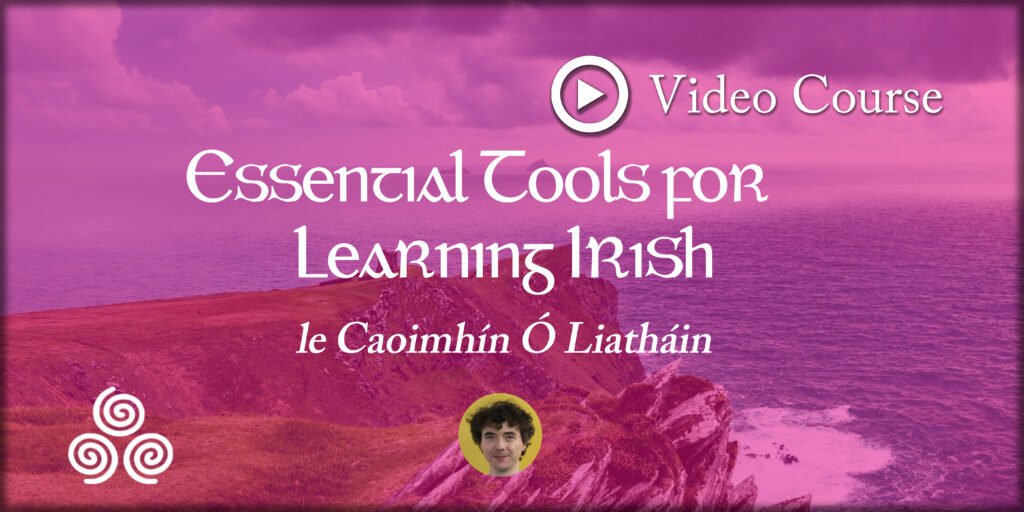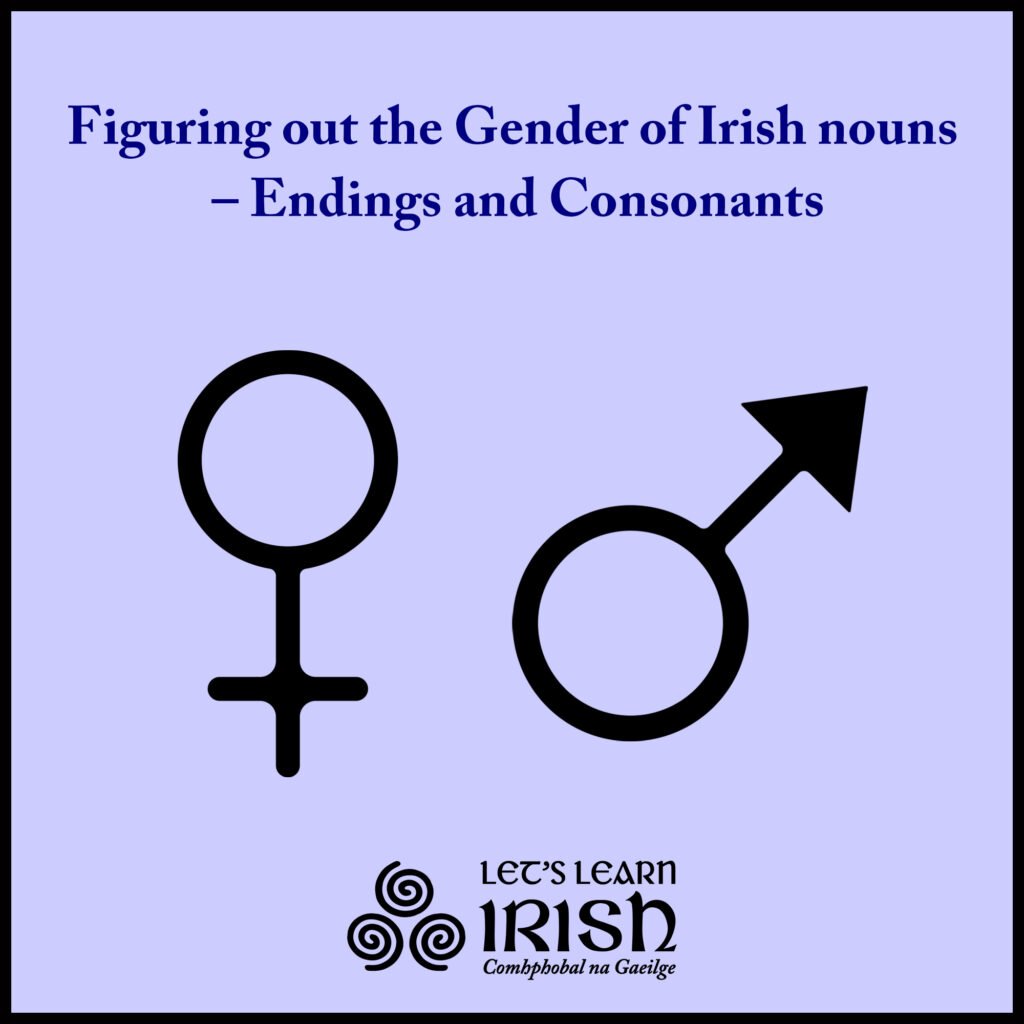Tips for Learning Irish Grammar
 So, you want to improve your understanding of Irish grammar? Would it help if I told you that, for example, definite feminine nouns beginning with a vowel are preceded in the genitive singular by the definite article na and an h-prothesis? Well, maybe – if you’re a grammar nerd or a computer!
So, you want to improve your understanding of Irish grammar? Would it help if I told you that, for example, definite feminine nouns beginning with a vowel are preceded in the genitive singular by the definite article na and an h-prothesis? Well, maybe – if you’re a grammar nerd or a computer!
For most learners, grammar can feel overwhelming or unnecessarily complex—full of unfamiliar terms and rules that seem to defy logic. The good news is, it doesn’t have to be that way.
Understanding Irish grammar is essential not just for speaking correctly, but for truly unlocking the richness of the language. Grammar helps you form sentences, make sense of patterns, and express yourself more clearly and confidently. It also brings a deeper appreciation of the language’s unique structure and musicality.
In this article, I’ll share practical, straightforward tips to help make Irish grammar more accessible and, dare I say it—actually enjoyable. Whether you’re a beginner or brushing up, these ideas will help you build confidence, reduce frustration, and find greater joy in your Irish language journey.
1. Memorable Examples
If you’re like most people, remembering an abstract rule like the one listed above can be quite a challenge. An easier (and more interesting) way to get to grips with Irish grammar, is by not learning the rules themselves, but by familiarising yourself with a handful of memorable examples that show the rules in action.
Such memorable examples can easily be found among the many Irish seanfhocail (proverbs), logainmneacha (placenames), nathanna cainte (set phrases or idioms), and amhráin (songs).
Consider the rule I mentioned at the beginning: adding the definite article na and a h-prothesis to definite feminine nouns beginning with a vowel in the genitive singular. It sounds quite complicated, perhaps, but let’s look at a few examples of that rule in action. You may be familiar with some of them already.
2. Seanfhocail (Proverbs)
Tús maith leath na hoibre.
- Literally: A good start is half the work.
- Meaning: A strong start makes the rest of the job easier.
I dtús na haicíde is fusa í a leigheas.
- Literally: It’s easiest to cure a disease at the beginning.
- Meaning: The sooner a problem is addressed the better.
Éist le fuaim na habhann agus gheobhaidh tú breac.
- Literally: Listen to the sound of the river and you will get a trout.
- Meaning: You have to understand before you can succeed.
Tá súil le béal an chuain ach níl súil le béal na huaighe.
- Literally: There’s hope at the harbour mouth, but not at the edge of a grave.
- Meaning: A person at sea (or abroad) may eventually return, but a person who is known to be dead will not.
3. Logainmneacha (Placenames)
- Baile na hAbhann (Literally: River Town)
- Baile na hAille (Literally: Cliff Town)
- Baile na hUamha (Literally: Cave Town)
- Baile na hEaglaise (Literally: Church Town)
- Baile na hAitinne (Literally: Town of the Furze or Gorse)
- Baile na hInse (Literally: Town of the Island, Holm, or Water Meadow)
Fun fact: the first of these is the Gaeltacht village in County Galway where the Irish-language television channel TG4 has its headquarters.
4. Nathanna cainte (Set phrases or idioms)
- Ar fud na háite (everywhere / all over the place)
- I láthair na huaire (currently / at the moment)
- In umar na haimléise (in the depths of depression / in the deepest despair)
- Ar bhóthar na haimhleasa (on the road to disaster / on the road to perdition)
- Ag seasamh na honóra (keeping up appearances / standing on ceremony)
- Ag faire na huaire (watching the clock)
- Ag dul i leith na haoise (getting a bit old)
- In ómós na hócáide (to mark the occasion)
- Ag fuarú na haimsire (passing the time)
5. Amhráin (Songs)
- Beannacht Ó Rí na hAoine (A Blessing from God)
- Amhrán na hEascainne (The Eel Song / Song of the Eel)
- Béal Átha na hAbhann (The Mouth of the River)
- Móirín na hEaglaise (Maureen of the Church)
6. Samplaí coitianta eile (Other common examples)
- Muintir na háite (the locals / the local people)
- I rith na hoíche (during the night / all through the night)
- Réamhaisnéis na haimsire (the weather forecast)
- Ionsaí na hInse (the Siege of Ennis – an Irish dance with eight people)
- Bunreacht na hÉireann (the Irish Constitution)
Conclusion
I hope that some of the above examples will stick in your mind even if the rule itself doesn’t.
See if you can notice this na + h- pattern next time you read or listen to something in Irish. You may even notice that this pattern also occurs for all nouns beginning with a vowel in the nominative plural, regardless of gender (e.g. na héin, na huibheacha, na hÉireannaigh) – but that’s a topic for another article!
 You might also like to try this approach with other grammar rules, as you encounter them. Collecting a handful of memorable examples that show the rule in action not only reduces the frustration that comes with trying to memorise the rule itself, but it can also improve your natural feel for Irish grammar, enrich your vocabulary, and deepen your understanding of Irish language and culture. It’s a win-win! Ádh mór leis an bhfoghlaim!
You might also like to try this approach with other grammar rules, as you encounter them. Collecting a handful of memorable examples that show the rule in action not only reduces the frustration that comes with trying to memorise the rule itself, but it can also improve your natural feel for Irish grammar, enrich your vocabulary, and deepen your understanding of Irish language and culture. It’s a win-win! Ádh mór leis an bhfoghlaim!
For more tips, see Caoimhín’s Basic Irish Grammar course, where he explains 30 Irish grammar topics in short, concise videos.
Bígí páirteach!
Join the online Irish community at LetsLearnIrish.com.
Follow on social media @LetsLearnIrish.





